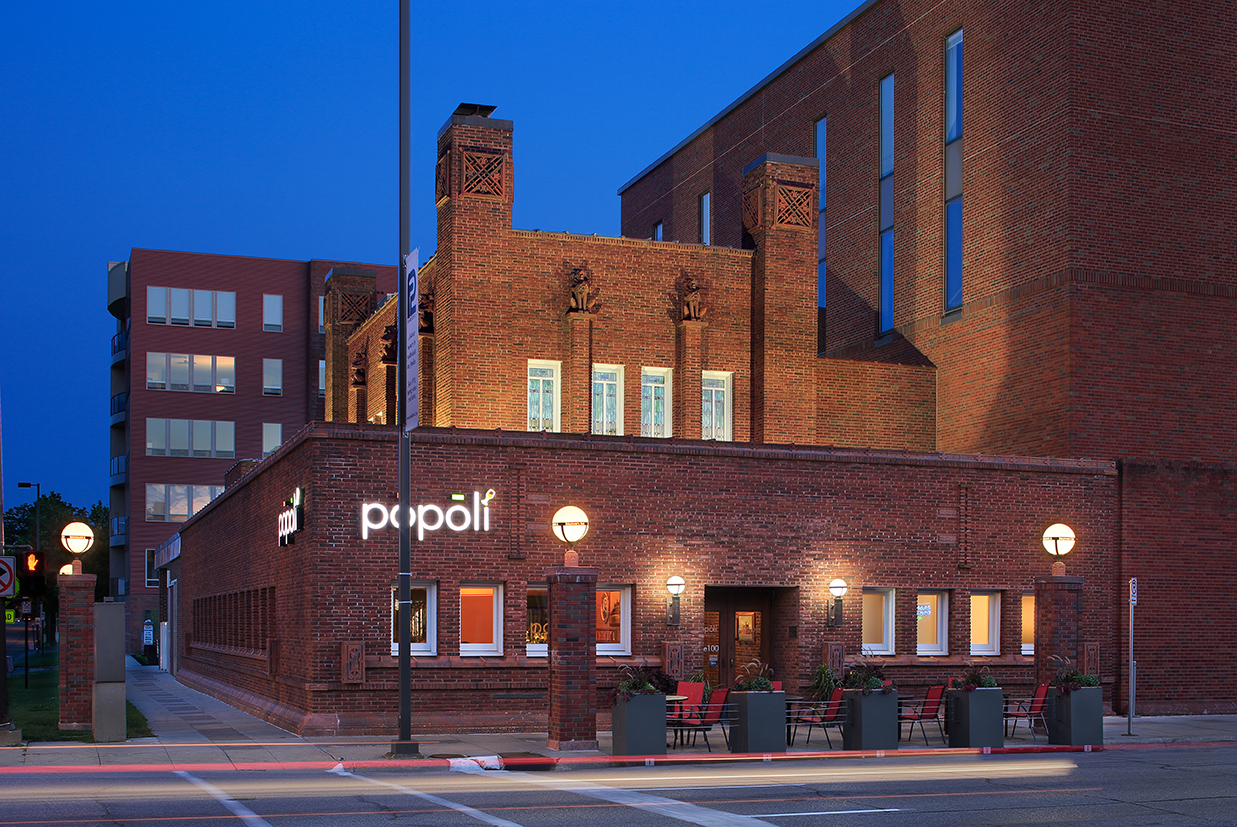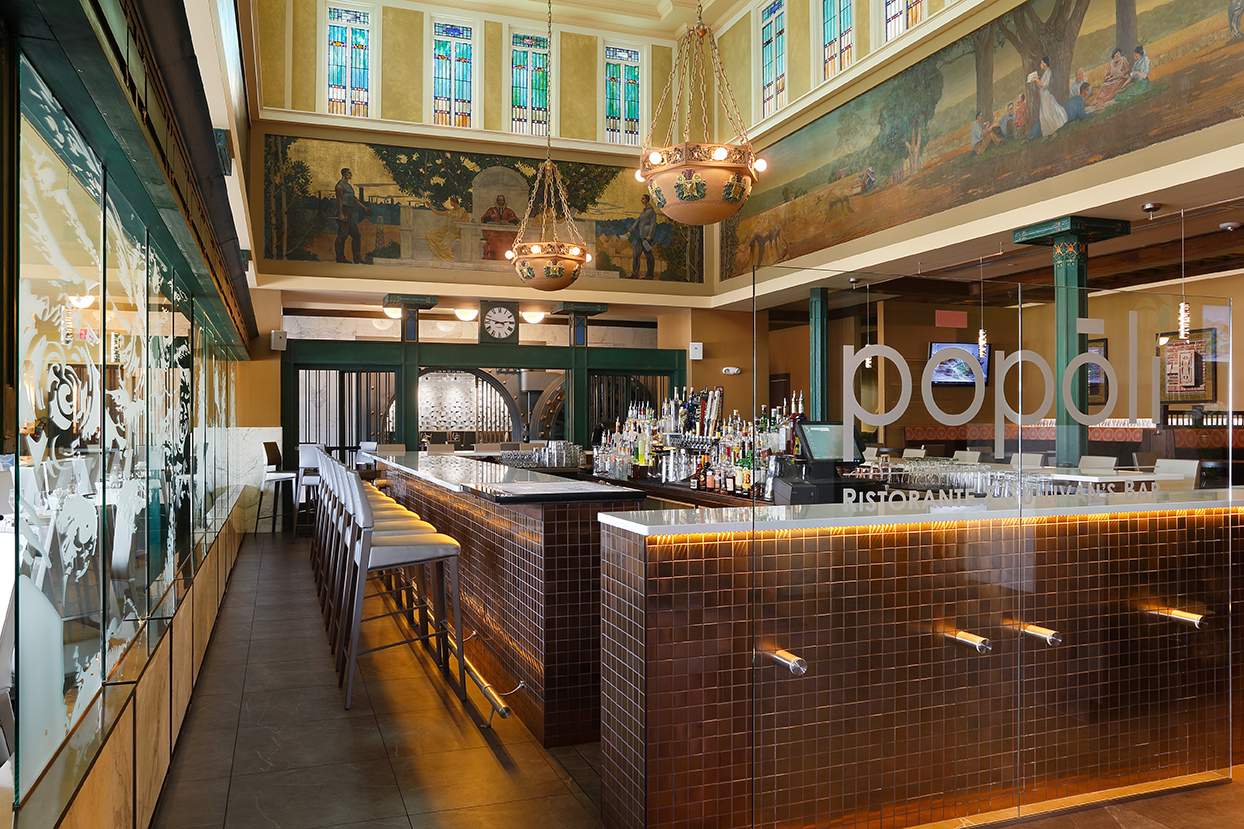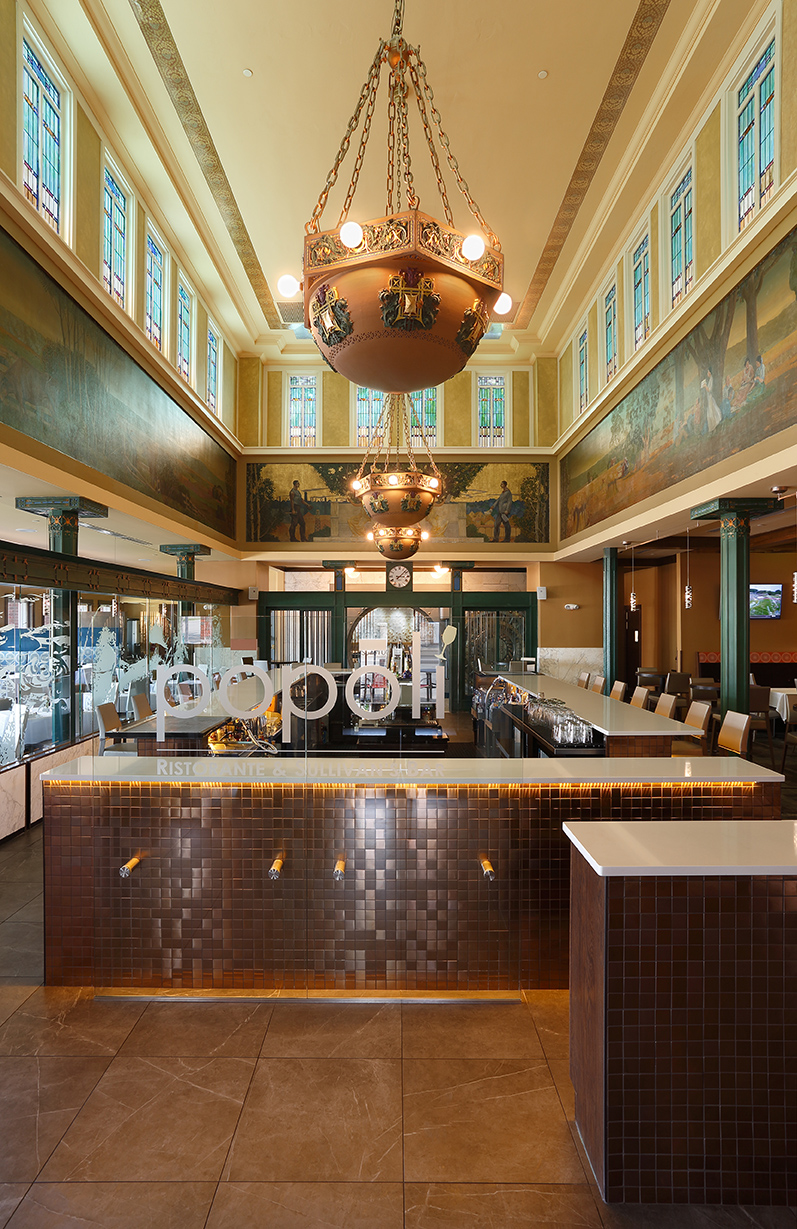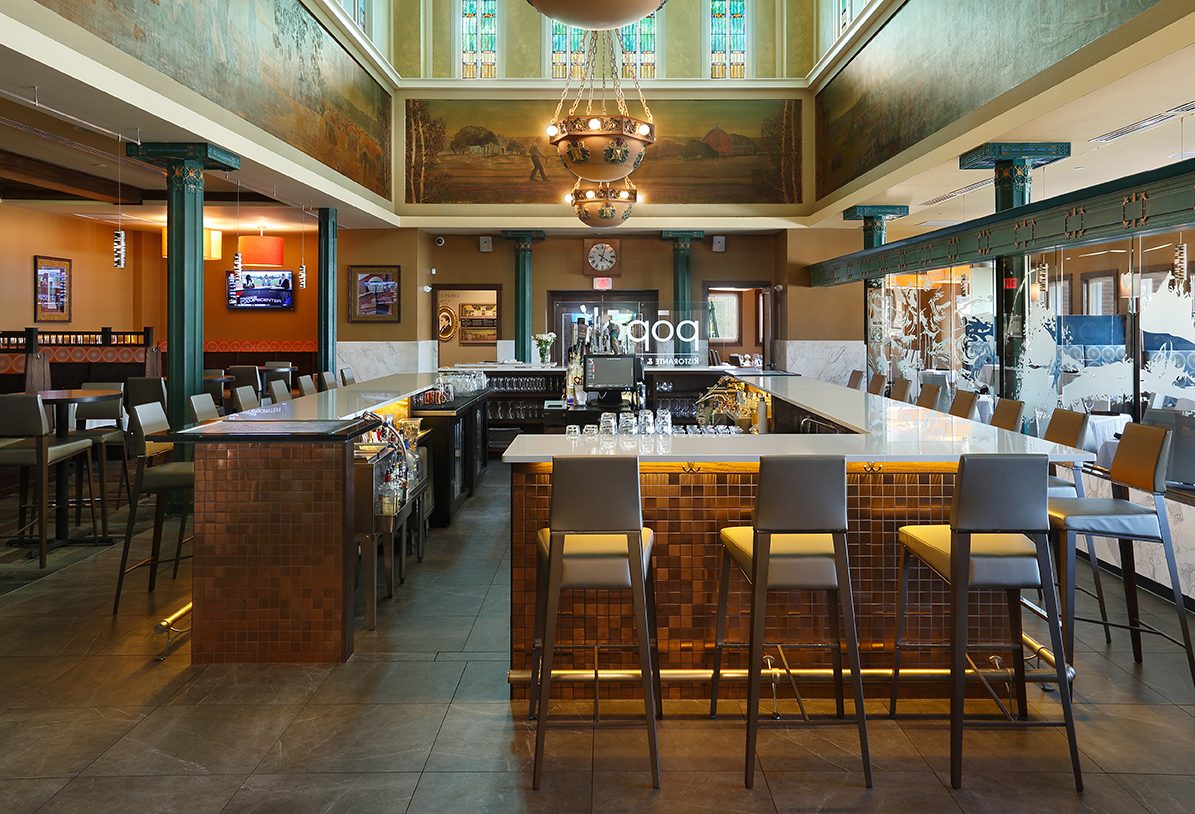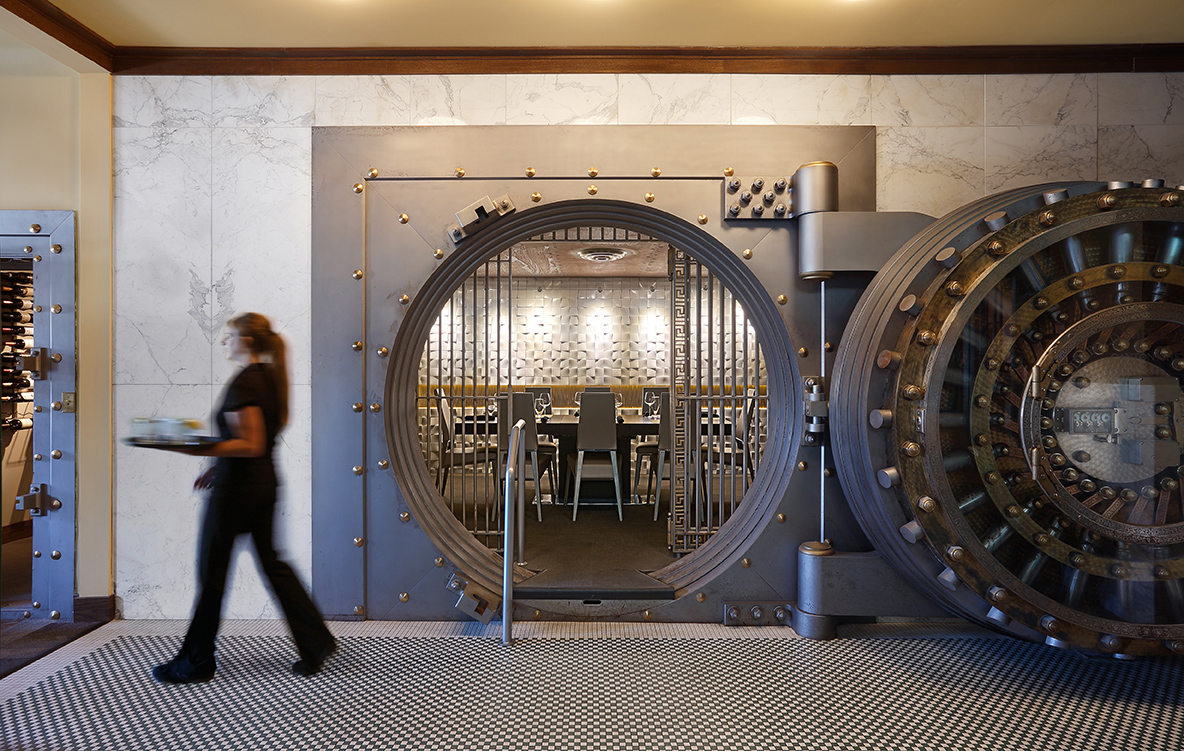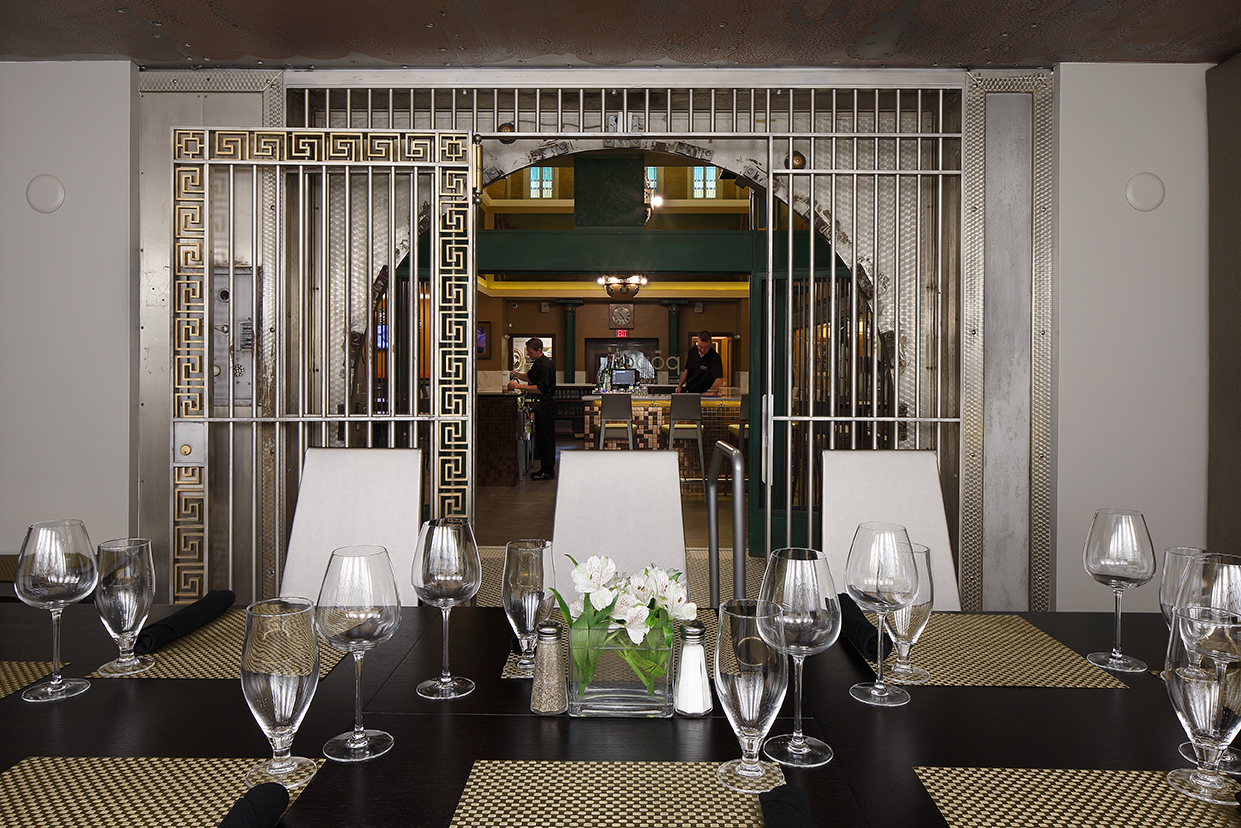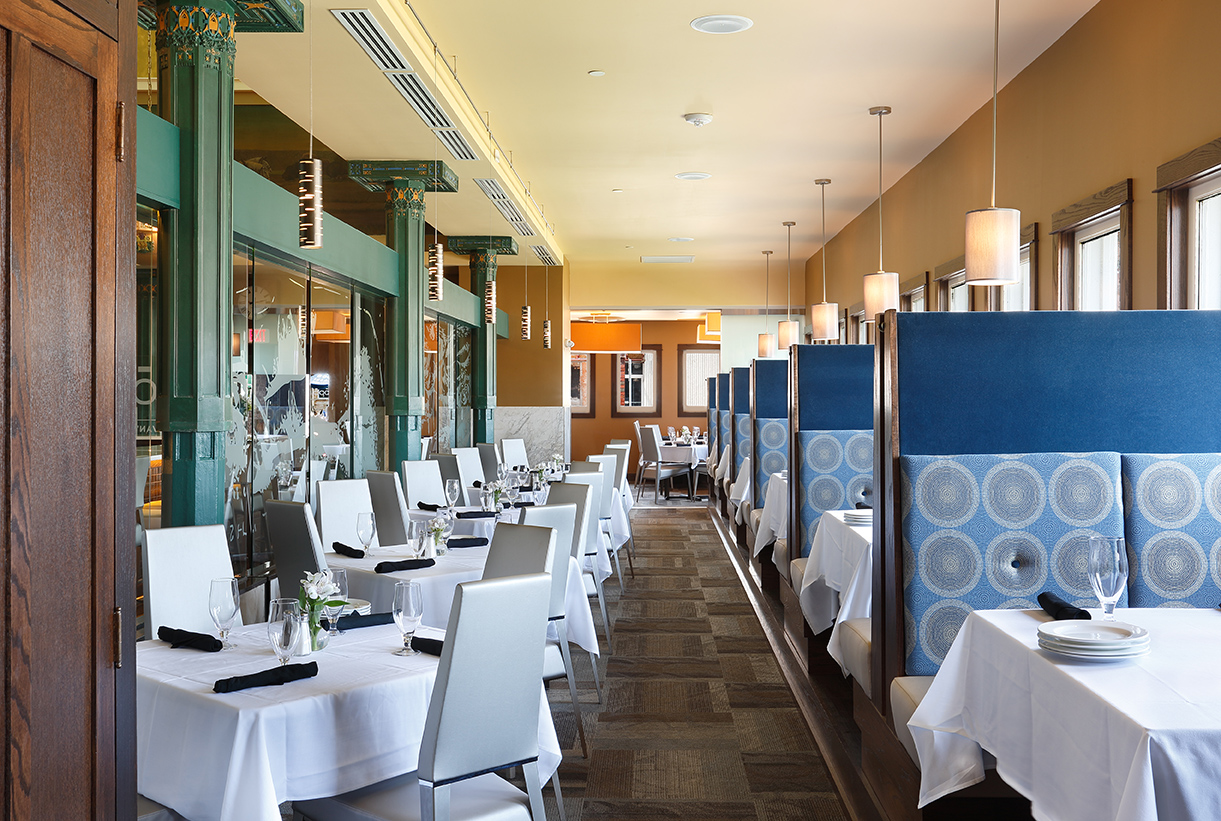Popoli Ristorante & Sullivan’s Bar
The People’s Bank in Cedar Rapids, Iowa was designed by Louis Henry Sullivan and was completed in 1912. The bricks for the exterior of the building were produced in 15 different shades, producing, as Sullivan remarked, “the effect of an antique Oriental rug.” The interior of the building includes clerestory walls and murals by Allen Philbrick depicting life in rural Iowa. The original Sullivan design was radically altered during the 1950s and 60s to accommodate two additions. The renovations included dropping the ceiling to a point below the art glass clerestory, eliminating all the marble and ornament in the bank lobby, covering the original tile floor, and altering the entry facade.
OPN Architects has been involved with helping preserve this important structure for more than 25 years. In 1991, the design team led a full-scale restoration of the building, returning the interior to its original condition. In 2008, flooding severely damaged the building and bank operations ceased. The building remained vacant, and in 2012 was named to Preservation Iowa’s Most Endangered Properties list. In 2013, investors stepped in with a new vision for the space: to restore the historic interior and repurpose the bank as an elegant restaurant. Having worked on the 1991 restoration, the design team understood the original plan and sought to respect the integrity of the historic elements while creating new features in a contemporary palette that were distinct, yet complementary to the original design.
The goal of the design was to change the function of the space while letting the original beauty of the building shine. The damaged historic elements have been restored, including the plaster, columns, chandeliers, and murals. The circulation of the restaurant has been defined by the original design’s strong axial orientation. The room is divided into three primary zones: dining area, bar, and lounge. The bank vault is on axis with the entry and was repurposed as an intimate dining room with a dramatically textured and lit feature wall, visible from the entrance. The dining area is located in the space originally occupied by the bank of teller stations. A glass wall has been lightly inserted between the marble base of the teller windows and the beams that run overhead, providing acoustical separation between the dining room and the bar. Bookending the bar is an open lounge area with banquette seating running the length of the room. The character of the space is defined through the rhythmic placement of the columns with their decorative capitals that wrap around the room, drawing the eye up to the restored murals and the dramatic clerestory windows.
